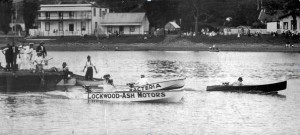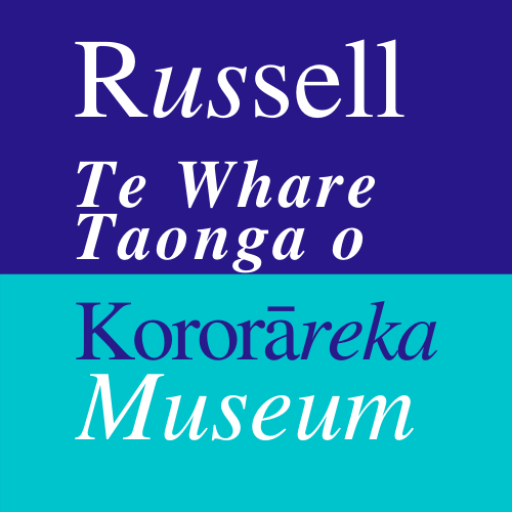 Locally built boats and imported outboards was the way of it then. The dark-hulled Deeming-built Baby Mac seems to be getting the jump on its rivals in this race. Although this photo isn’t dated exactly it is probably close to 1924, which was the year Albert Deeming brought home a winner’s pennant from the NZ Outboard Championships. He used an Elto motor (Evinrude Light Twin Outboard ) known as the Ruddertwin – a revolutionary design for its time. There’s no propeller, the motor is stationary and the boat is turned by using a rudder much like an inboard vessel. Cooling is by water forced in the rudder and up to the powerhead, steering is with ropes, and the exhaust is underwater, so is quiet and apparently almost fume free. Lockwood-Ash was another outboard brand available then, the other main ones being Johnson, Evinrude and Caille. An Elto Light Twin and a 1926 Johnson 110 outboard, both gifted by the Deeming family are part of the current “Out of Storage” exhibition at Russell Museum.
Locally built boats and imported outboards was the way of it then. The dark-hulled Deeming-built Baby Mac seems to be getting the jump on its rivals in this race. Although this photo isn’t dated exactly it is probably close to 1924, which was the year Albert Deeming brought home a winner’s pennant from the NZ Outboard Championships. He used an Elto motor (Evinrude Light Twin Outboard ) known as the Ruddertwin – a revolutionary design for its time. There’s no propeller, the motor is stationary and the boat is turned by using a rudder much like an inboard vessel. Cooling is by water forced in the rudder and up to the powerhead, steering is with ropes, and the exhaust is underwater, so is quiet and apparently almost fume free. Lockwood-Ash was another outboard brand available then, the other main ones being Johnson, Evinrude and Caille. An Elto Light Twin and a 1926 Johnson 110 outboard, both gifted by the Deeming family are part of the current “Out of Storage” exhibition at Russell Museum.
The main buildings visible in the background here are the old Pacific Hotel (later Hananui House) pulled down in 1961, Church cottage, Tamati Waka Nene’s cottage, and the Post Office, demolished in 1970. Photofile no. 3532.








